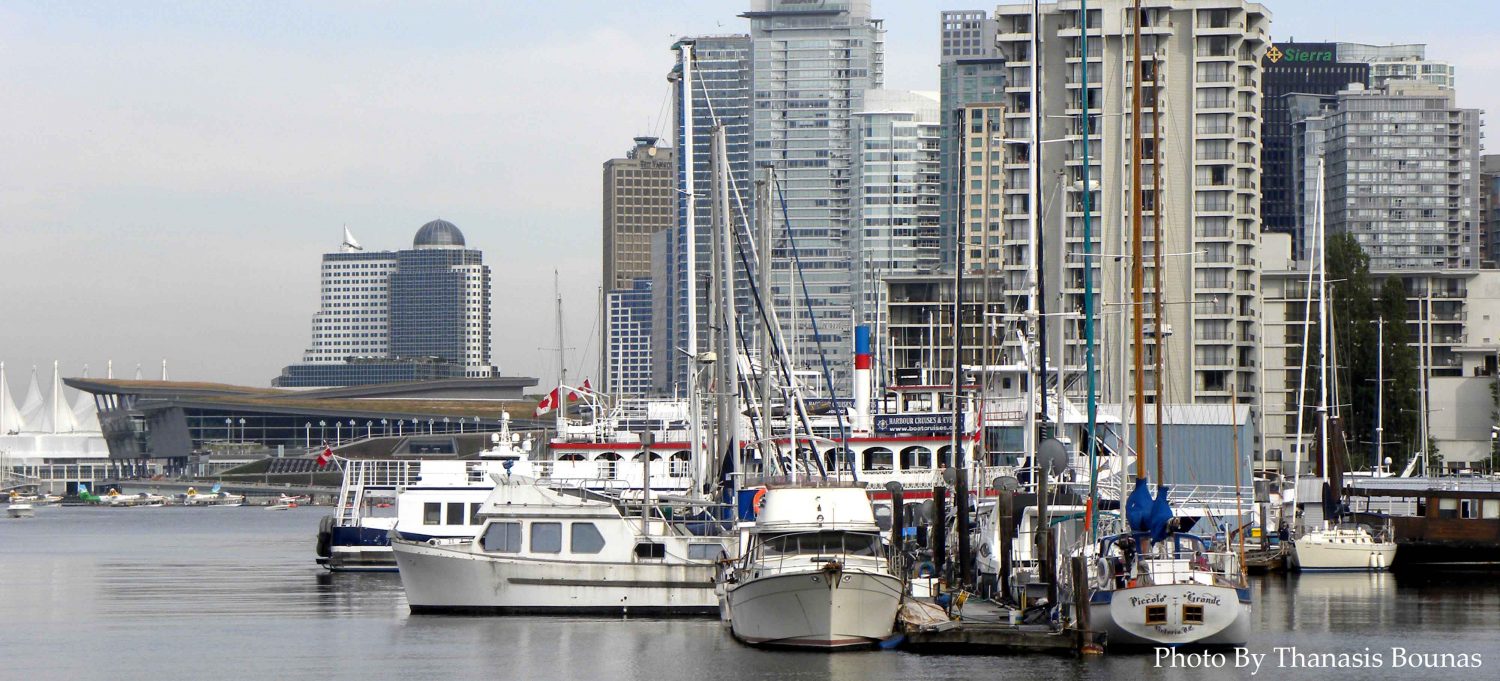
A Bridge Through Time
Stretching proudly over False Creek, the Granville Bridge is one of the defining landmarks of Vancouver, British Columbia, Canada.
It connects the vibrant downtown core with the artistic charm of Granville Island — a link not just of geography, but of generations.
For more than a century, the bridge has mirrored the city’s evolution, standing as both a symbol of progress and a piece of living history.
The Early Years: A Timber Beginning
The first Granville Bridge was completed in 1889, during a time when Vancouver was still finding its identity.
Constructed from wood and steel, it was a marvel of its era — a bold connection across the tidal waters of False Creek.
Horse-drawn carriages and early automobiles crossed its planks, and fishermen could be seen casting lines beneath its span.
Though modest by modern standards, that first bridge laid the foundation for Vancouver’s growth toward the sea.
Rebuilding After the Fire
By the early 1900s, Vancouver was booming, and the original bridge could no longer handle the increasing traffic.
A new, sturdier steel structure opened in 1909, designed to carry the growing weight of streetcars, trucks, and travelers.
This second incarnation of the Granville Bridge Vancouver reflected the city’s ambition — a commitment to connecting communities and fostering trade.
It became a vital artery, linking downtown’s energy with the industry and innovation emerging along False Creek.
The 1950s Transformation
As the postwar years brought rapid modernization, Vancouver embarked on a bold new vision for urban infrastructure.
In 1954, the third and current version of the Granville Bridge was unveiled — a soaring eight-lane concrete giant built to embrace the automobile age.
Engineers designed it high above the water to allow ships to pass freely below, a reflection of Vancouver’s maritime legacy.
The bridge’s sweeping views soon became a part of the city’s visual identity.
A Structure of Strength and Grace
With its solid piers and elegant curvature, the Granville Bridge stands as a blend of strength and simplicity.
Its design speaks to mid-century modern ideals — function, clarity, and enduring presence.
Today, as commuters cross its expanse, they move not just between neighborhoods but through time itself, experiencing layers of Vancouver’s history beneath every wheel and footstep.
The Bridge and Granville Island
Beneath its concrete canopy lies one of Vancouver’s most beloved destinations: Granville Island.
Once an industrial hub of sawmills and factories, the area was reborn in the 1970s as a cultural and culinary haven.
The bridge’s towering supports frame the island’s bustling markets and colorful art studios, creating a dynamic interplay of steel, stone, and creativity.
Few urban spaces capture such harmony between structure and soul.
Engineering the Future
In recent decades, the city of Vancouver, British Columbia, Canada has continued to reimagine the Granville Bridge for modern needs.
Upgrades to pedestrian walkways, cycling lanes, and seismic reinforcement reflect Vancouver’s ongoing commitment to safety and sustainability.
Projects such as the Granville Bridge Connector aim to transform the bridge into a more inclusive, people-friendly corridor.
The bridge is evolving once again — just as the city beneath it always has.
A View Like No Other
From the deck of the bridge, the panorama is breathtaking: the glittering skyline of downtown to the north, and the serene waters of False Creek below.
To the west, the sun sets over English Bay, painting the horizon in hues of gold and pink.
It’s a view that captures everything about Vancouver — its urban ambition and natural grace intertwined.
Every visitor who pauses here understands why the Granville Bridge is more than a road; it’s an experience.
A Symbol of Connection
Beyond its concrete and steel, the bridge embodies Vancouver’s spirit of connection.
It links neighborhoods, cultures, and moments in time — from the city’s industrial roots to its creative present.
Whether seen from a boat beneath or from a high-rise window above, it remains a constant presence, reminding Vancouverites of their shared journey.
Stories Beneath the Arches
Artists, photographers, and storytellers have long been drawn to the space beneath the Granville Bridge.
Its columns have hosted murals, markets, and performances — a place where architecture meets artistry.
Each echo beneath the arches carries the memory of decades past, blending history with human expression.
In this way, the bridge continues to inspire life below as much as it supports it above.
Preserving a Legacy
As Vancouver continues to grow skyward, the Granville Bridge endures as a vital part of its heritage.
Its continued preservation ensures that future generations can walk, cycle, and drive across a piece of living history.
For a city that cherishes both innovation and memory, this bridge stands as the perfect metaphor: strong, adaptive, and timeless.
In Reflection
The history of the Granville Bridge in Vancouver, Canada, is more than a story of engineering — it’s a story of identity.
From humble timber beginnings to the concrete span we see today, it represents the resilience and vision of a city shaped by water and willpower.
To cross it is to feel the heartbeat of Vancouver, British Columbia, Canada, echoing in every bolt and breeze.
A bridge that unites — not only places, but people and time itself.












Be the first to comment